
Originally published in The Clarinet 52/3 (June 2025).
Copies of The Clarinet are available for ICA members.
Audio Reviews:
June 2025
RECORDINGS
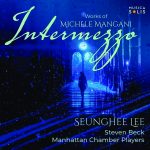
Intermezzo. Seunghee Lee, clarinet; Steven Beck, piano; Manhattan Chamber Players. M. Mangani: Executive for clarinet and string orchestra; Pagina d’Album for clarinet and string orchestra; Intermezzo for clarinet and string orchestra; Love Theme for clarinet and string orchestra; Dancing Doll for clarinet and string orchestra; Ave Maria for clarinet and string orchestra; Tre Danze Latine for Clarinet and Piano; Dreaming for clarinet and piano; Theme for Clarinet for clarinet and piano; Andante Malinconico for clarinet and piano; Souvenir for clarinet and piano; A. Piazzolla/arr. M. Mangani: Tango Etude No. 3 for clarinet and string orchestra. Musica Solis, MS202408. Total Time: 50:09.
This album features works written or arranged by Italian clarinetist, composer, and conductor Michele Mangani and performed by clarinetist Seunghee Lee. The works are scored for either clarinet and string orchestra or clarinet and piano. The album also includes Piazzolla’s Tango Etude No. 3, arranged by Mangani for clarinet and strings.
Mangani’s Tre Danze Latine is the most impressive performance on the album. The work is a charming and virtuosic representation of three dances: “Contradanza,” “Vals Criollo,” and “Chorinho.” Lee’s approach is light and elegant with remarkably clear technique. Pianist Steven Beck approaches the work with precision and grace, and together they capture the spirit and virtuosity of these popular Latin dances.
Another exemplary performance is Piazzolla’s Tango Etude No. 3 for clarinet and strings. Lee’s interpretation is passionately inflected, playing with a refinement that brings out the true nature of the tango. The choice of the clarinet’s register, along with the punctuated, somewhat rough articulation in the strings, is reminiscent of the accordion, which provides the arrangement more authenticity. There are many arrangements and performances of Piazzolla’s tangos, and this one is especially effective.
Many of Mangani’s works are lovely songs for the clarinetist to sing, and their simplicity leaves the clarinetist with nowhere to hide. Lee’s sensitivity and subtle nuance serves this style, and one can hear her thoughtful approach throughout. Mangani’s work Dreaming is particularly heartfelt and effective, and the album’s title work, Intermezzo, is earnestly warm and endearing. These works are easy to listen to, yet quite challenging to make sound as precise and “easy” as Lee’s performances on this album. They would be glorious little additions to a concert program, particularly one that may need a light yet sincere moment.
Throughout the album, Seunghee Lee presents Mangani’s works with unpretentious and straightforward style. Her sound is lovely and controlled, allowing the lyricism of Mangani’s melodies to shine, and in the more virtuosic moments, the lightness of her approach is refreshing and difficult to achieve. The program notes state that this album is “to serve as a resource for both clarinet students and seasoned professionals” and surely it does. However, Lee has also managed to produce an album that will certainly have wider, more popular appeal. Many of the works have a cinematic quality and unassuming beauty that casual listeners would easily enjoy and likely understand.
– Amanda McCandless

Serenade. Kilian Herold, clarinet; Florian Donderer, violin; Barbara Buntrock, viola; Tanja Tetzlaff, cello. E. Krenek: Serenade, op. 4, for clarinet, violin, viola, and cello; H. Gál: Serenade, op. 93, for clarinet, violin, and cello; K. Penderecki: Quartet for clarinet, violin, viola, and cello. CAvi-music, AVI 8553537. Total Time: 57:57.
This recording brings to life three amazing works for clarinet and strings that we don’t hear very often: Ernst Krenek’s Serenade, op. 4, for clarinet, violin, viola, and cello (1919), Hans Gál’s Serenade, op. 93, for clarinet, violin, and cello, (1937), and Krzysztof Penderecki’s Quartet for clarinet, violin, viola, and cello (1993). Each performer on this album is a renowned soloist, chamber musician, and skilled orchestral musician. With that level of expertise, it is no wonder that this recording is absolutely stunning in all facets of musicianship, and the works themselves are a stunning tapestry of compositional techniques and approaches of the early to mid-20th century.
The first six tracks of this album are the world-premiere recording of Krenek’s Serenade. The first movement, “Moderato,” is decidedly light and pastoral right from the beginning, before twisting and turning through dark passages as the music develops and progresses. Herold showcases his impressive ability to shapeshift in and out of the various textures, and his skill at blending seamlessly with the timbres of the strings. The second movement, “Adagio ma non troppo,” begins with a solo cello, where we hear expression and intensity in every single note performed by Tetzlaff. As the music moves on, the clarinet emerges, dark and serious, from a strings-only texture, with a timbre that is warm and colorful. In the third movement, “Allegro molto,” we hear the technical virtuosity of which this group is capable. Herold’s staccato articulation is so short in the opening that it is almost hard to distinguish it from the string pizzicato. The fourth movement, “Langsamer,” begins with a lightly accompanied clarinet melodic line, expertly shaped by Herold. He modulates his tone color, becoming almost indistinguishable from the cello. In the “Allegretto grazioso,” the light and playful style is created by the varied and intentional clarinet articulation that Herold executes effortlessly. It is light, but full of body. The final quick movement, “Allegro vivace,” is a type of fugue that sounds almost out of control, with all instruments playing in their extreme registers. Herold plays with intensity, distinguishing his color from his colleagues, and treating us to impossibly light articulations before the movement concludes.
Hans Gál’s Serenade occupies the next four tracks of this breathtaking recording. The first movement, “Cantabile, moderato,” begins with Herold’s magnificent phrasing and musical nuance on display as the dominant voice before violinist Florian Donderer takes over. We are also treated to a display of Herold’s technical virtuosity, wherein he plays around with time and articulation style. In the “Burletta, vivace ma non troppo,” we hear a very short and intense style that shows how precise Herold, Buntrock, Donderer, and Tetzlaff can be, creating a master class on uniform articulation in chamber music. This is especially true around the halfway mark when the style shifts to something much more connected and intimate. In the “Intermezzo,” the strings play perfectly styled pizzicatos, creating almost a guitar-like effect on top of which Herold can sing with a timbre that is now so dark and intense it almost feels too rich to listen to. The final movement, “Giocoso, Allegro molto moderato,” stands apart from the rest of the work in that it almost sounds like it could be part of the Krenek in terms of its musical language, before shifting to a more ultra-romantic mood.
The final work on the album, Penderecki’s Quartet for clarinet, violin, viola, and cello, is the perfect work to help the listener bridge the gap between the ultra-modern Krenek and more traditionalist Gál work. The first movement, “Notturno adagio,” opens with an unaccompanied clarinet melody. Herold’s command of phrasing and nuance are superb here. Tetzlaff picks up the phrase from Herold before the two join in a beautiful duet. The way they stretch and push into the dissonances creates a tension and intensity of release that is a hallmark of Penderecki’s music. The second movement begins with a unison melodic line from the strings before Herold enters with an intense and screaming sound that cuts tastefully through the thick string texture. The clarinet takes center stage, with a line featuring extreme range and technique that makes it clear why these pieces are not often performed, however Herold makes it sound easy, with light and pointed articulations and soaring altissimo. The “Serenade, valse” is a strange melody similar to hearing a conversation, but from a distance where you can make out the speakers but not the words. As the movement progresses, so does the tempo, and the distant conversation becomes a clear dialogue between all instruments. This moves attacca into the “Abschied,” the final movement of the work. The opening is reminiscent of a call to prayer, with long drone pitches, wherein Herold melts into the sound of his colleagues, almost indistinguishable. We don’t hear Herold until about a quarter of the way into the track, when he creates an intense tension in his phrase that is only fully released during the next entrance of the drone. Herold’s tone color is so pure and clear, in all registers, that his phrases are as clear as a person speaking.
This is an incredible display of artistry on the part of Herold, but also of chamber music, and overall musicianship. I highly recommend this album to be a part of every clarinetist and chamber musician’s library.
– Vanessa Davis

She/Her. Maria du Toit, clarinet; Vera Kooper, piano. I. P. Rainier: Suite for Clarinet and Pianoforte; G. Oforka: Olorun Mi; G. Bacewicz: Kaprys Polski; M.E. von Sachsen-Meiningen: Romanze; C. de Grandval: Deux Pièces; I. Gotkovsky: Images de Norvège; S. Feigin: Fantasia; F. Aubin: Un soir à Montfort-l’Amaury; Una Fioretti di Francesco; G. Tailleferre: Arabesque; L. Morrison: Fallout; B. Woof: Dervish; T. Martin: Solstice. Channel Classics, CCS47024. Total Time: 73:05.
Clarinetist Maria du Toit and pianist Vera Kooper have assembled a spectacular album of works for clarinet and piano spanning from the 19th century to the present day. The album, titled She/Her, features music by 12 different female composers from across the globe. Many of the tracks on the album are world-premiere recordings, shedding light on previously overlooked works and offering a fresh perspective on the contributions of these talented women. The artistry on display in this album is exceptional. Each piece is thoughtfully interpreted and tells a unique story through the duo’s expressive performances.
A standout work on the album is Ivy Priaulx Rainier’s Suite for Clarinet and Pianoforte. Du Toit and Kooper perfectly capture the spirit of this piece with moments of extreme virtuosity, incessant rhythmic ostinatos, and accented musical gestures—particularly in the upper register of the clarinet range. Du Toit’s vibrant clarinet sound soars above the menacing piano line in the fourth movement.
Olorun Mi, written by African composer Grace Oforka, is a simplistic, yet highly effective work for solo clarinet. Du Toit’s mellow clarinet tone and buoyant articulation effortlessly complement the songlike nature of this work. Contrasting the beautiful simplicity of Oforka’s work is Barbara Woof’s Dervish, which highlights du Toit’s technical agility and impressive virtuosity.
The album features two composers from the Romantic era: Marie Elisabeth von Sachsen-Meiningen and Clémence de Grandval. Sachsen-Meiningen’s exquisite Romanze—which was written for clarinetist Richard Mühlfeld—is elegantly performed by Kooper and du Toit. Here, the phrasing of the duo partners is perfectly in sync. Du Toit’s extreme lyricism is enhanced by Kooper’s collaborative sensitivity. Deux Pièces by Grandval offers two distinct characters. The pensive first movement features a melody in the low register of the clarinet which contrasted by a whimsical and virtuosic dancelike second movement.
Ida Gotkovsky’s Images de Norvège is superbly performed by the duo. The hazy first movement erupts into an explosive outburst by the clarinet that ascends into the altissimo register. Kooper and du Toit’s technical prowess is on full display in the spirited second movement. Next, the influence of Jewish traditional music is evident in Sarah Feigin’s Fantasia. The crooning opening melody explodes into a dazzling flash of klezmer-inspired dancing passages. Du Toit performs the work with lively inflections that give energy and playfulness to the piece.
The album concludes with Theresa Martin’s introspective and joyful Solstice for clarinet and piano. Du Toit and Kooper’s interpretation of this work flawlessly captures the essence of each movement. Other works on the album include Kaprys Polski by Grażyna Bacewicz, Fallout by Lise Morrison, Arabesque by Germaine Tailleferre, Un Soir à Montfort-L’Amaury and Una fioretti di Francesco by Francine Aubin. She/Her is a wonderful celebration of women composers and their contributions to clarinet literature as well as the brilliant artistry demonstrated by du Toit and Kooper.
– Kylie Stultz-Dessent
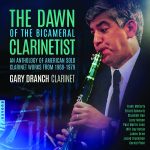
The Dawn of the Bicameral Clarinetist. Gary Dranch, clarinet. F. McCarty: Soundpieces from Scratch for solo clarinet, 12 pre-recorded clarinets, and synthesizer; E. Schwartz: Extended Clarinet for B-flat clarinet and tape, lights, and grand piano; S. Ran: For an Actor: Monologue for Clarinet (in A); L. Nelson: Music II for Clarinet and Tape; P.M. Zonn: Stray Puffs for Clarinet Solo; W.G. Bottje: Modalities 2 for Clarinet and Tape; J. Drew: St. Dennis Variations for B–flat Clarinet; J. Druckman: Animus III for B-flat clarinet and tape; G. Plain: Showers of Blessings. Navona Records, NV6693. Total Time: 96:00.
In psychological terms, bicameral refers to the cognitive mind’s ability to listen and speak. Here, we have an anthology featuring many interactive works for clarinet and electronic sounds written in a “call and response” fashion. Clarinetist Gary Dranch, a specialist in new and contemporary music, obtained his Doctor of Musical Arts degree from the University of Illinois at Urbana-Champaign in 1981. Dranch has devoted his career to promoting new compositions for clarinet and enlarging its repertoire. As a native New Yorker, Dranch returned home to embark on a freelance career, performing and championing new music compositions with many of New York City’s preeminent contemporary ensembles at premier venues.
Frank McCarty’s Soundpieces from Scratch exploits all dimensions of the performance space by situating the one live clarinetist in the middle of four loudspeakers from which 12 pre-recorded clarinets (performed in this recording by Frank McCarty) emanate using quadraphonic tape. In Soundpieces from Scratch, Dranch presents a “call to the wild” in conversation with multitrack sounds including many colorful timbres, multiphonics and pitch bends in a very dramatic manner.
Elliott Schwartz conceived of Extended Clarinet as an idiomatic clarinet showpiece, representative of works of the genre that focus on theatrical aspects of musical performance as an integral component of the contemporary concert experience. In this work, the accompanying tracks are non-clarinet, computer sounds. Here again, Dranch aptly displays his palette of extended techniques including flutter tonguing and vocalization. Coupled with his tour de force virtuosity, clarity of articulation and extreme dynamic contrast, this is a showpiece performance in the truest sense.
Shulamit Ran was inspired to write an unaccompanied clarinet work due “…in large part to the intensely personal ethos with which the clarinet is associated in my mind.” Regarding the title, For an Actor: Monologue for Clarinet (in A), Ran has written, “To me, the instrument in its contemporary usage suggests an incredible gamut of gestures, dynamics, emotions.” This unaccompanied, playful work quite aptly displays Dranch’s technical virtuosity and rapid-fire articulation.
Larry Nelson wrote Music II for Clarinet and Tape during his tenure at West Chester State College in Virginia (now West Chester University) where he was the director of the experimental music studio. The clarinet and tape are like two equal partners, each with their own cadenza-soliloquy sections. An especially commendable element of this performance is Dranch’s multiphonic pitch accuracy with the electric sounds. Again, virtuosic display is abundant as is sensitivity to blending with the kaleidoscopic sounds of the accompaniment.
Stray Puffs for Clarinet Solo (1968), the earliest work on this album, was composed by Dranch’s thesis advisor and musical mentor, the composer, conductor, and clarinetist Paul Martin Zonn. In this unaccompanied work, Dranch’s warm tonal capabilities are especially evident. Again, his negotiation of wide registral leaps is expertly demonstrated. This piece, lying largely in the extreme upper register, is performed with consummate control and beauty.
Will Gay Bottje composed Modalities 2 for Clarinet and Tape in 1971 during his tenure at Southern Illinois University in Carbondale, IL. He had recently founded the university’s first electronic music studio there in 1965. Definitely a “period piece” of the burgeoning electroacoustic genre, Modalities 2 offers driving rhythms in the electronic accompaniment with a wailing, virtuosic clarinet role performed very dramatically in this recording.
St. Dennis Variations for B–flat Clarinet (1979) by James Mulcro Drew is the most recently composed work on this album. Drew attended the New York School of Music and studied with Riegger and Varese. The unaccompanied works on this album showcase Dranch’s lyrical and tonal abilities most prominently as evidenced by this performance. Tonal colors and dynamic extremes are in abundance, as is an extremely legato playing style.
Animus III was composed September 1969 in New York and Paris and is the third in a series of Animus compositions Jacob Druckman composed for live instrumentalist and electronic tape. Subtitled “An Explication for B-flat clarinet and tape,” the work is conceived as a theatrical work which focuses on musicians and their virtuosity. Again, we have a somewhat “dated” work from the electroacoustic canon with a driving, rhythmic accompaniment and inclusion of vocal sounds. When the soloist eventually appears, though, the playing is outstanding from a technical standpoint; Dranch’s articulation and glissando abilities are quite impressive.
Showers of Blessings was composed by Gerald Plain in Lubbock, Texas, in 1972. The electronic tape part was realized in the electronic music studio of the University of Michigan and in the composer’s independent studio. Most notable in this performance is Dranch’s virtuosity with glissandi; the control and pacing of the note changes are executed with control rarely demonstrated by clarinetists. The multiphonics are also masterfully executed and expressive in their use.
This recording is an extremely important contribution to the solo clarinet recording canon, especially in its uniqueness and representation of somewhat neglected works in our repertoire.
– Kenneth Long
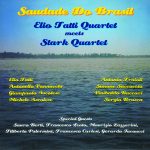
Saudade Do Brasil. Elio Tatti Quartet: Elio Tatti, bass; Antonello Vannucchi, piano; Giampaolo Ascolese, drums; Michele Ascolese, guitar; Stark Quartet: Antonio Fraioli, clarinet, arranger; Simone Saccoccio, clarinet; Vinibaldo Baccari, clarinet; Sergio Brusca, bass clarinet; with special guests: Sauro Berti, clarinet; Francesco Lento, trumpet; Maurizio Zazzarini, tenor saxophone; Filiberto Palermini, alto saxophone; Francesco Carlesi, keyboards; Gerardo Iacoucci, arrranger. E. Tatti: Belem; Latino; Astrud; Slow Bossa; Recife; Guaranà; A.C. Jobim: One note Samba; Triste; J. Gilberto: Desafinado; Corcovado. Notami Jazz, NJ052. Total Time: 41:22.
Saudade Do Brasil, a collaborative recording between the Elio Tatti Jazz Quartet and the Stark Clarinet Quartet (with six special guest artists), presents a fabulous continuation of the lengthy history of jazz artists teaming up with classical artists to create a fusion of the best of two worlds. In this case, the collaboration adds an interesting addition to the body of recordings in the genre of bossa nova. This recording is well produced, with excellent recording quality in a very attractive package.
The album includes a nice mix of classic bossa nova compositions by masters and creators of the genre—notably Antonio Carlos Jobim and João Gilberto—and modern compositions by electric bassist and composer Elio Tatti. Arrangements of the compositions are presented by Antonio Fraioli (clarinetist), Gerardo Iacoucci (arranger) and, presumably, Tatti. The arrangements offer an eclectic mix of sounds—traditional clarinet quartet moments, the clarinet quartet representing a saxophone section in a big band composition, and traditional jazz quartet presentations of the works.
The original compositions by Tatti are quite well constructed and quintessentially idiomatic. They could and should all be added to the bossa nova lexicon of “standards,” particularly the track titled Astrud. Upon first listening, I thought this was a composition by Jobim or Gilberto that I had somehow overlooked in my long journey studying the bossa nova. Belem is a straight ahead bossa nova, with quite a large ensemble, notable because of some very impressive high clarinet playing, evocative of the flute in a standard samba band. Latino starts with a bass line performed by the bass clarinet, then joined by the clarinet quartet, sounding very “Piazzolla-like,” taken over eventually by the jazz quartet, and ending with a reprise of the clarinet quartet. Slow Bossa is a feature for the alto saxophonist with tasteful accompaniment by the rhythm section and clarinet quartet. Recife features the tenor saxophonist similarly accompanied by rhythm section and clarinet quartet. Guaranà is a joyful alto saxophone-led bossa nova with rhythm section and clarinet quartet accompaniment, with several solo interjections from the bass player and composer!
The classic bossa nova compositions are some of the most recognizable works by Jobim and Gilberto. One Note Samba is presented as a clarinet quartet arrangement, accompanied by a jazz trio; then the electric piano plays an inventive improvised solo followed by an improvised bass solo, with a clarinet quartet interlude, and the clarinet quartet having the last word. Triste begins as a clarinet quartet, but quickly is usurped by the jazz quartet, with the clarinet quartet sneaking in to accompany the jazz quartet, ending with an impressive trumpet solo and clarinet quartet vamp. Desafinado gives us a nicely arranged clarinet presentation of the harmonized melody. Corcovado begins as a clarinet quartet feature, then a single triangle accompanies the quartet as they continue, finally being joined by the jazz quartet.
The performances are all outstanding. All musicians are obviously at the top of their game and fully comfortable performing in the bossa nova genre. Any time “classical” musicians attempt to perform popular music, there is a concern of the musicians not really understanding the subtleties of “swing” and how to perform in a commercial genre. There is none of that in this recording. All of the clarinetists sound like they could fit in at any of the clubs in Rio de Janeiro. Whether the clarinetists are improvising or performing a “realized” solo, they do so expertly. The jazz quartet is equally adept in their performance.
The album is quite enjoyable with impressive performances throughout by all musicians. It is full of excellent music. If you are a fan of bossa nova, you need to check this album out. If you are not sure if you like bossa nova or not, after hearing this recording, you will be a fan!
I recommend this album—listen to it on a beach with a caipirinha in hand!
– Ben Redwine

The Book of Spells. The Merian Ensemble: Christina Smith, flute; Emily Brebach, oboe, English horn; Marci Gurnow, clarinet, bass clarinet; Jessica Oudin, viola; Elisabeth Remy Johnson, harp. C. Assad: The Book of Spells; Solais; J. Higdon: The Sound of Light; L. Plowman: Small World; N. Chamberlain: Atalanta; A.L. Lanzilotti: meridian; M. Kouyoumdjian/arr. E.R. Johnson: “A Boy, and a Makeshift Toy” from Children of Conflict; S.H. Newbold: Alis Volat Propriis (She Flies With Her Own Wings); K.R. Osberg: Just Another Climb. Navona Records, NV6644. Total Time: 66:00.
The Merian Ensemble’s debut album and namesake composition, The Book of Spells, opens with mesmerizing bass clarinet playing by Marci Gurnow and draws the listener into a world of enchantment designed to instruct in spells of love and relationships, wealth and prosperity, and health and wellbeing. It is quickly evident that every bass clarinetist needs a harpist as a collaborator in the evocative nature of the music’s storytelling. The ensemble is impeccable, the effects are theatrical, and the originality is undeniable, a hallmark of Clarice Assad’s compositions. The blend of the woodwinds reflects the orchestral backgrounds of the players, their conscientious approach to tone and pitch, and their collective experience as part of the Atlanta Symphony Orchestra.
The effect of the bass clarinet and viola tuttis is also a thrilling timbre that is under-utilized but gains more prismatic effect with the addition of low flute in the playful and thoughtful opening of Jennifer Higdon’s The Sound of Light. Impeccable entrances and mastery of intonation to the point where it is used as a color create an atmosphere that is welcoming and intriguing, continuing to enthrall the listener. Lynne Plowman’s Small World exploits the players’ ability to nest in each other’s sounds to create a group color that shimmers with intensity. Christina Smith and Emily Brebach show an uncanny knowledge of each other’s tendencies and tone to create a composite of flute and English horn sound that remains intact in the precise rhythmic exchanges.
Nicole Chamberlain’s Atalanta is upbeat and inventive in its incorporation of percussive sounds with a fantastic and virtuosic ending from all the players. Leilehua Lanzilotti brings an intellectual and empathic interpretation to the Merian Ensemble’s namesake, the intrepid scientist and artist Maria Sibylla Merian, with skilled and enchanting figurations by Jessica Oudin as intricate as Merian’s drawings. Mary Kouyoumdjian’s “A Boy and a Makeshift Toy” from Children of Conflict shows rich attention to texture and timbre and is offset by Assad’s beautiful harp solo, Solais, before the album launches into Soon Hee Newbold’s rollicking Alis Volat Propriis.
The album concludes with Kimberly R. Osberg’s Just Another Climb, which takes each of the ensemble members into their instrumental stratospheres but shows resilience and evenness of tone. This ending touch salutes the mindful activism of each composer featured on the album and the artists who brought their music to life, showing that the mindset of the youngest composer on the album is optimistic and sees today’s challenges as “just another climb” inspired by the achievements of predecessors.
It is a gift to our musical community that these women leaders in orchestral playing devoted themselves to being conduits of chamber music—not just through their playing, but also through their commissions and grant funding, showing dedication to the remuneration and programming of women composers.
– Andrea Vos-Rochefort
NEW RELEASES
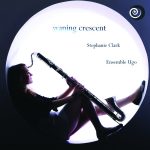
Waning Crescent. Stephanie Clark, bass clarinet; Ensemble Ugo. Independent Release.
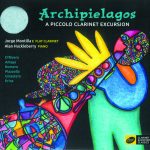
Archipielagos. Jorge Montilla, E-flat clarinet; Alan Huckleberry, piano. Samek Music, CC0083.

Live and Unbound. Nancy Williams, clarinet; Angela Mitchell, soprano; Anne Breeden, piano. Carpe Clarinet.

Arcade. Wonkak Kim, clarinet; Eunhye Grace Choi, piano. MSR Classics, MS 1779.

My Place. Crux Duo: Lloyd Van’t Hoff, clarinet; Lisa Moore, piano and voice. ABC Classic, ABCL0098.

Mentors. Gaia Gaibazzi, clarinet; Clarissa Carafa, piano. Da Vinci Classics, C00963.

Robert Simpson: Chamber Music Vol. 1. Emma Johnson, clarinet; Peter Cigleris, clarinet; Derek Hannigan, bass clarinet; and other collaborators. Toccata Classics, TOCC 0701.

Live in Berlin. Kinan Azmeh, clarinet; CityBand. Dreyer Gaido Records.
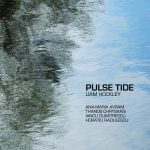
Pulse Tide. Liam Hockley, basset horn. Aural Terrains, TRRN1853.
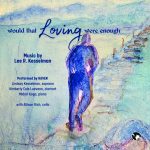
Would That Loving Were Enough. HAVEN: Lindsay Kesselman, soprano; Kimberly Cole Luevano, clarinet; Midori Koga, piano; with Allison Rich, cello. Blue Griffin Records, BGR675.
Comments are closed.